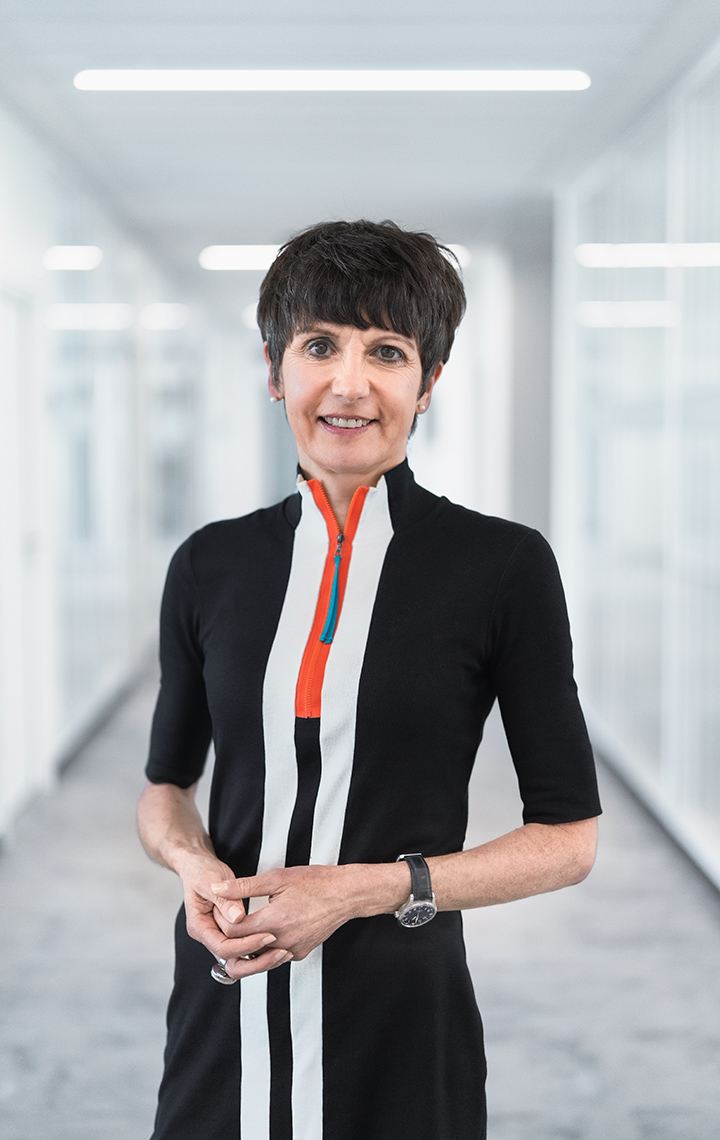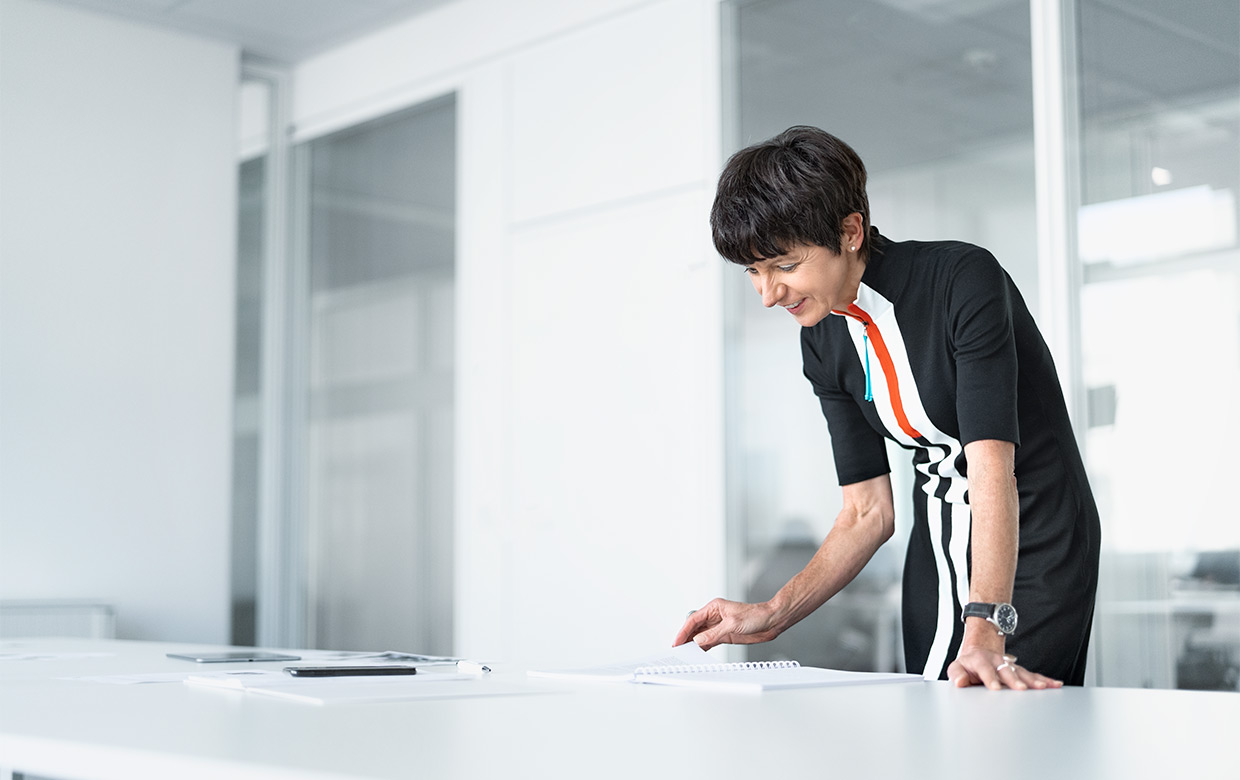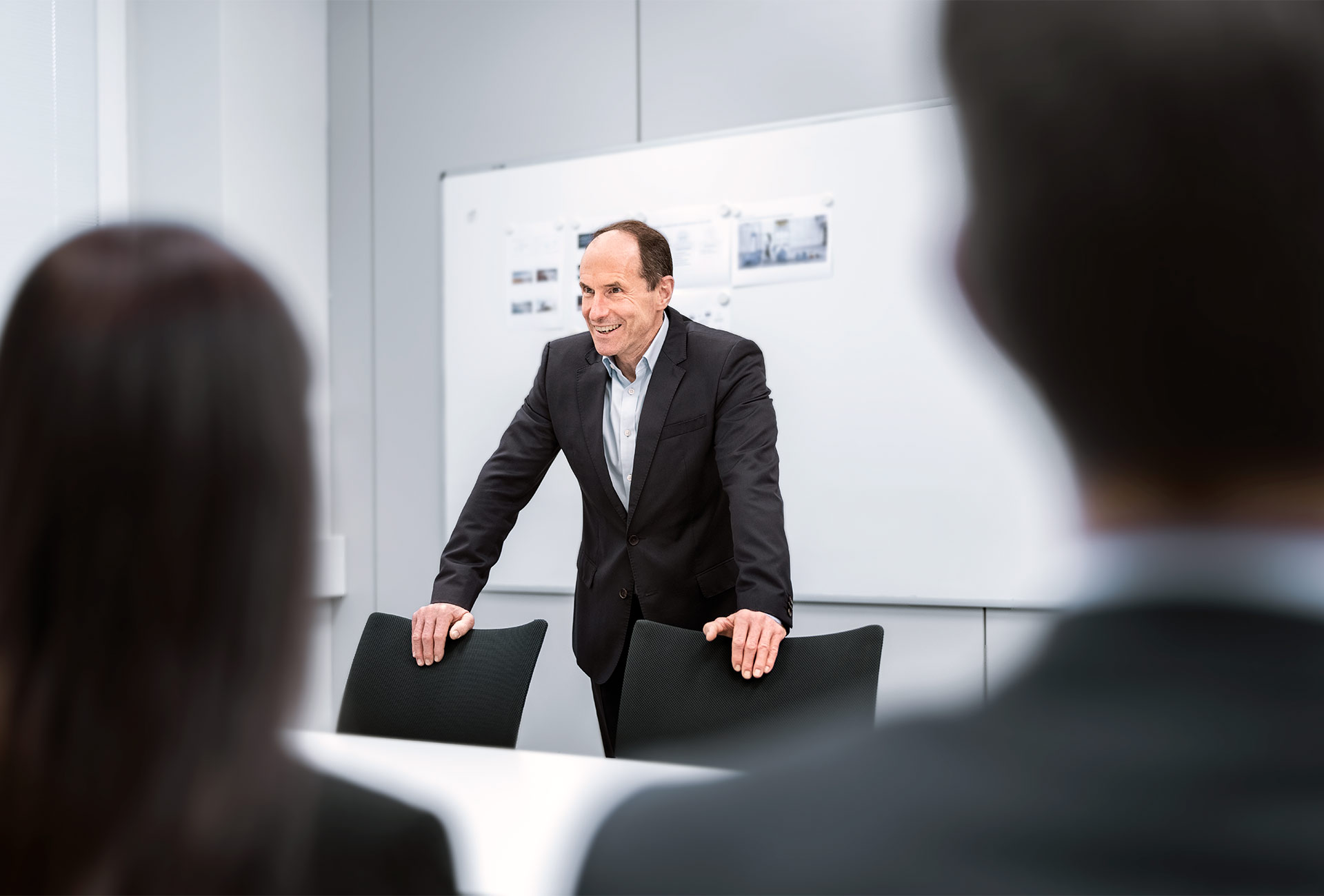Innovation through Diversity
Companies value diverse teams because they broaden perspectives. KSB is no different. Dr Stephan Timmermann, CEO, and Martina Szautner, Head of Human Resources, explain why diversity is so important for a global company like KSB. Especially when it comes to creating something new.

More women: Martina Szautner wants to increase the proportion of female managers at KSB. This
should increase from 13 percent today to at least 20 percent by 2025.
“Different people bring different perspectives to organisations.“
Dr Stephan TimmermannCEO of KSB
Diversity is on everyone’s lips. What do you understand by this at KSB?
Stephan Timmermann:
Plurality. Colourfulness. A modern understanding of society and social change. People are all different in terms
of their gender, ethnic origin, nationality, age, sexual orientation and basic attitude. Diversity is implicit
to our culture – at KSB we are outward looking and happy to have the world in our company.
Martina Szautner:
Every company comprises many distinct individuals with different ways of thinking, experience, perspectives,
cultures and lifestyles. This diversity is an asset for any enterprise.

A plus point for companies: Martina Szautner values diverse teams.
What role does diversity play at KSB?
Martina Szautner:
Appreciation is one of our core company values. This includes being open-minded towards other people and
opinions. We learn from each other and develop together. In a nutshell: We see the value of diversity.
Stephan Timmermann:
Different people bring different perspectives to the company. This is particularly important for global
companies like KSB. We have more than 80 international companies and employ people from more than 100 nations.
We need diversity to understand the world. Because the world is a diverse place! Our work is market-oriented and
customer-focused. Our success is based on developing products that bring added value to a wide range of
applications and cultures. This is why we want as much diversity as possible at KSB. It is a strength which
benefits us all.
Martina Szautner:
The same applies to the concept of inclusion. We seek to employ people with different physical and mental
skills, because together they have a positive impact on the success of the company. At KSB, we often exceed
legal requirements pertaining to topics such as accessibility. This is because we value the voices of women and
men with disabilities. They offer a different view of the world.
Mechanical engineering is traditionally a male-dominated discipline.
Martina Szautner:
This is reflected in the profile of our more than 15,000 employees. Women make up only 16 percent of our
workforce worldwide, and we want to change that. Our internal and external communications consciously seek to
break away from traditional role depictions. For example, we feature images of female professionals more often
on our social media channels to support our recruitment of women to technical positions – because engineering is
not just for men. It is equally important to address prejudices as early as possible: We support projects to
spark girls’ enthusiasm for science and technology already in nurseries and schools. Women working on the lathe
or as design engineers – this must become a given.
Stephan Timmermann:
Very important: We need more women in management. This is because they have a different discussion and
problem-solving culture than men. Their perspectives are important; their assessments enriching. Every company
stands to benefit from these insights. KSB has therefore set itself the goal of increasing the proportion of
female managers from the current 13 percent to at least 20 percent by 2025. This is an important step in
expanding diversity within our company.
How do you intend to achieve this?
Martina Szautner:
For a mechanical engineering company, this is a challenge. But we are taking it on by providing even more
targeted support for our female employees. This includes mentoring programmes, round table events with our four
Managing Directors and a women’s network. Communicating with others facing similar challenges can offer valuable
help. When it comes to appointments, we always ask whether there is not a woman who could do this job. This
sharpens awareness. Of course, we also offer special training programmes. These aim to prepare women for their
career path and offer personal development opportunities.
What are the advantages of teams with different compositions?
Stephan Timmermann:
Diverse teams evaluate ideas from fundamentally different perspectives. Women often have different approaches
than men, younger people know trends better, older people bring knowledge and experience. When the balance is
right, it becomes exciting. Such teams work creatively and flexibly. In comparison with homogeneous groups,
everything is slightly better thought out.
Martina Szautner:
In a constantly changing world, it is an advantage for companies to be able to engage many voices. Competent
managers and project leaders also play a crucial role in optimally managing diversity. After all, diverse teams
work differently than homogeneous ones. We therefore offer appropriate training for our managers and experts.
“In a constantly changing world, it is an advantage for companies to be able to engage many voices.“
Martina SzautnerHead of Human Resources

Multiple perspectives: Diversity strengthens KSB’s ability to innovate, according to Dr Stephan
Timmermann.
The coronavirus pandemic has affected cooperation in every company. What effects have you noticed?
Stephan Timmermann:
Physical meetings are often no longer possible; in many cases we are limited to digital communication. But this
brings some advantages: Telephone and video conferences can be arranged much more easily and naturally, there
are fewer organisational hurdles. Cooperation can then occur on a more equal footing. Hierarchies play a minimal
role in digital communication, making it easier for all participants to get involved. Contributions are made in
a more disciplined fashion, everyone listens more carefully. This often leads to better results.
What role does diversity play in innovation?
Stephan Timmermann:
It is particularly important in the early phase, for example in the development of a product. Risk can be
minimised when ideas are checked by multiple members of diverse teams incorporating different perspectives.
Different views give rise to different questions which can more effectively – and above all more quickly –
identify potentially expensive developmental missteps. Countermeasures can then be taken. This ‘fail fast’
approach is a basis for success.
Martina Szautner:
Our diverse development teams also shape our company culture: Agile approaches encourage team members to
question everything, correct if necessary, and then swiftly change or adapt their innovations. This is a plus
point in international competition.
Can you give an example?
Stephan Timmermann:
Our Business Innovation Lab sees colleagues from the most diverse backgrounds working together. Here,
experienced engineers collaborate with students who bring a whole new way of thinking. These diverse teams bring
ideas to completion. This means generating concepts and then developing them in more detail. The result is a
hotbed of ideas, with team members creating innovative digital business models for the needs of tomorrow.
How do you envisage future diversity in practice?
Stephan Timmermann:
Diversity is a reflection of the way we interact with each other in the company. In a colourful world, work is
much more fun and exciting. Our world can only be understood through dialogue and the exchange of ideas. This is
my idea of a working day spent with open-minded people looking to learn from each other.
